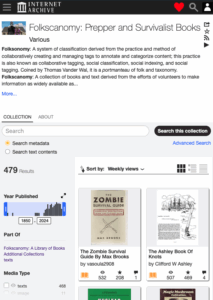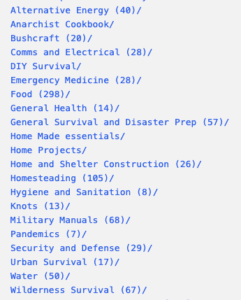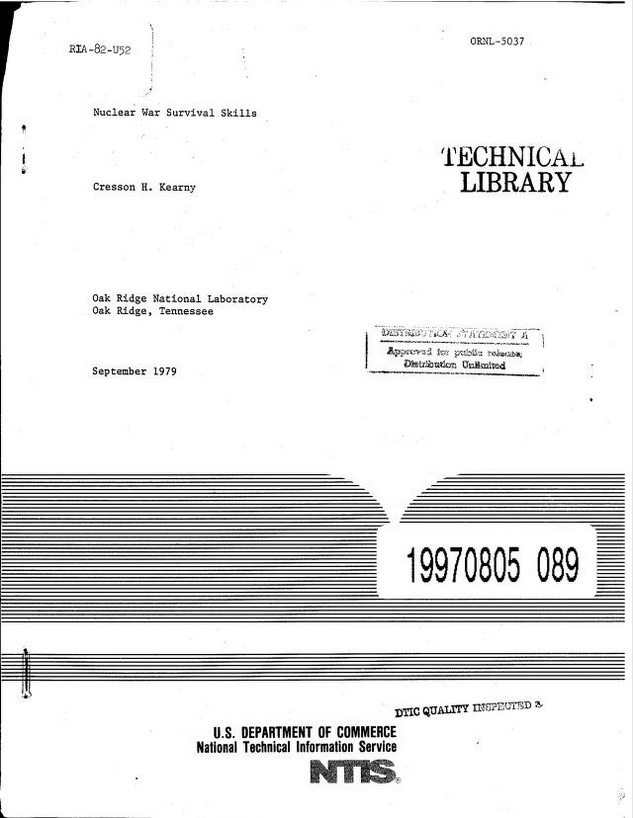Read free. Nuclear War Survival Skills, by Cresson H. Kearny, 1979.
Excerpt
In the first chapter the myths and facts about the consequences of a massive nuclear attack are discussed. As devastating as such an attack would be, with adequate civil defense preparations and timely warning much of the population could survive.
The information and instructions given in subsequent chapters tell the average citizen how to improve his and his family’s chances of surviving a nuclear attack by working together to build expedient shelters and homemade life-support equipment. The reader is urged to make at least some of these low-cost preparations before a crisis arises. The main emphasis, however, is on survival preparations that could be made in the last few days of a worsening crisis.
This book includes chapters on psychological preparations, warning and communications, and evacuation. Because the greatest need would be for shelter that would provide good protection against fallout radiation and also would permit prolonged occupancy, much of the book deals with this subject. These chapters describe the building of expedient shelters, their ventilation and cooling, the purification and storage of adequate water, the processing and cooking of whole grains and legumes, fallout meters, protection against fires and carbon monoxide, and expedient furnishings for shelters. Other chapters cover sanitation and preventive medicine, medical advice for nuclear survivors lacking the help of doctors, improvised footwear and clothing, and advice on minimum preparations that can be made at low cost and should be made before a crisis arises.
One appendix of the handbook gives detailed, field-tested instructions for building six types of earth-covered expedient fallout shelters, with criteria to guide the choice of which shelter to build. The design features of several types of expedient blast shelters are described in another appendix. Two others contain instructions for making an efficient shelter-ventilating pump and a homemade fallout meter that is accurate and dependable. Both of these essentials can be made with inexpensive materials found in most households. Drawings are used extensively, as are photographs of people actually building and living in the various shelters.
This first-of-its-kind report is primarily a compilation and summary of civil defense measures and inventions developed at ORNL over the past 14 years and field-tested in six states, from Florida to Utah. It is the first comprehensive handbook of survival information for use by untrained citizens who want to improve their chances of surviving a possible nuclear attack.
Introductory Pages
Related Posts

Folkscanomy Prepper and Survivalist Books

Draft: Collection of DIY and Survival PDFs

Draft: Collection of Civilian and Military Medical Manuals

Weather As A Force Multiplier








